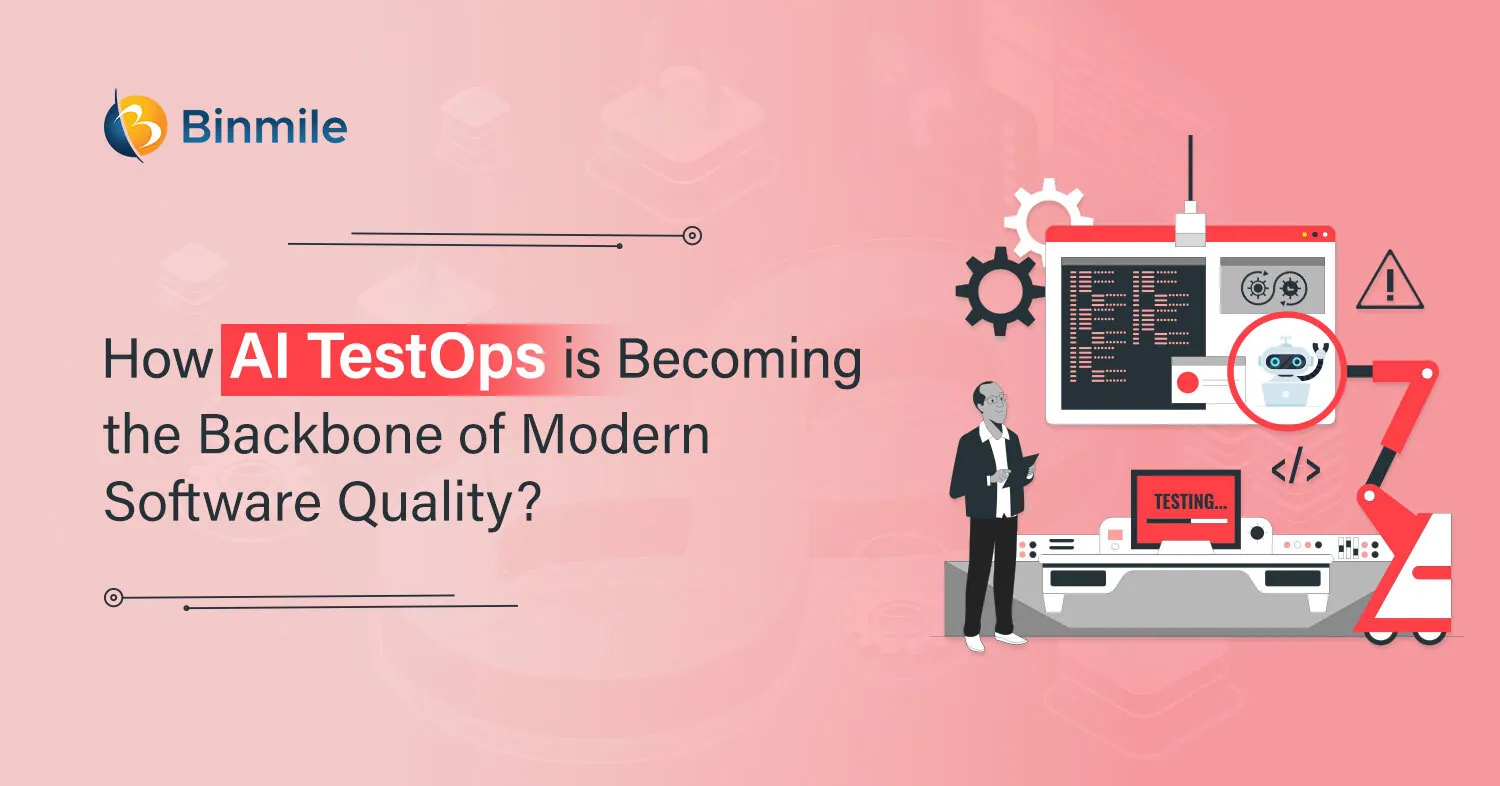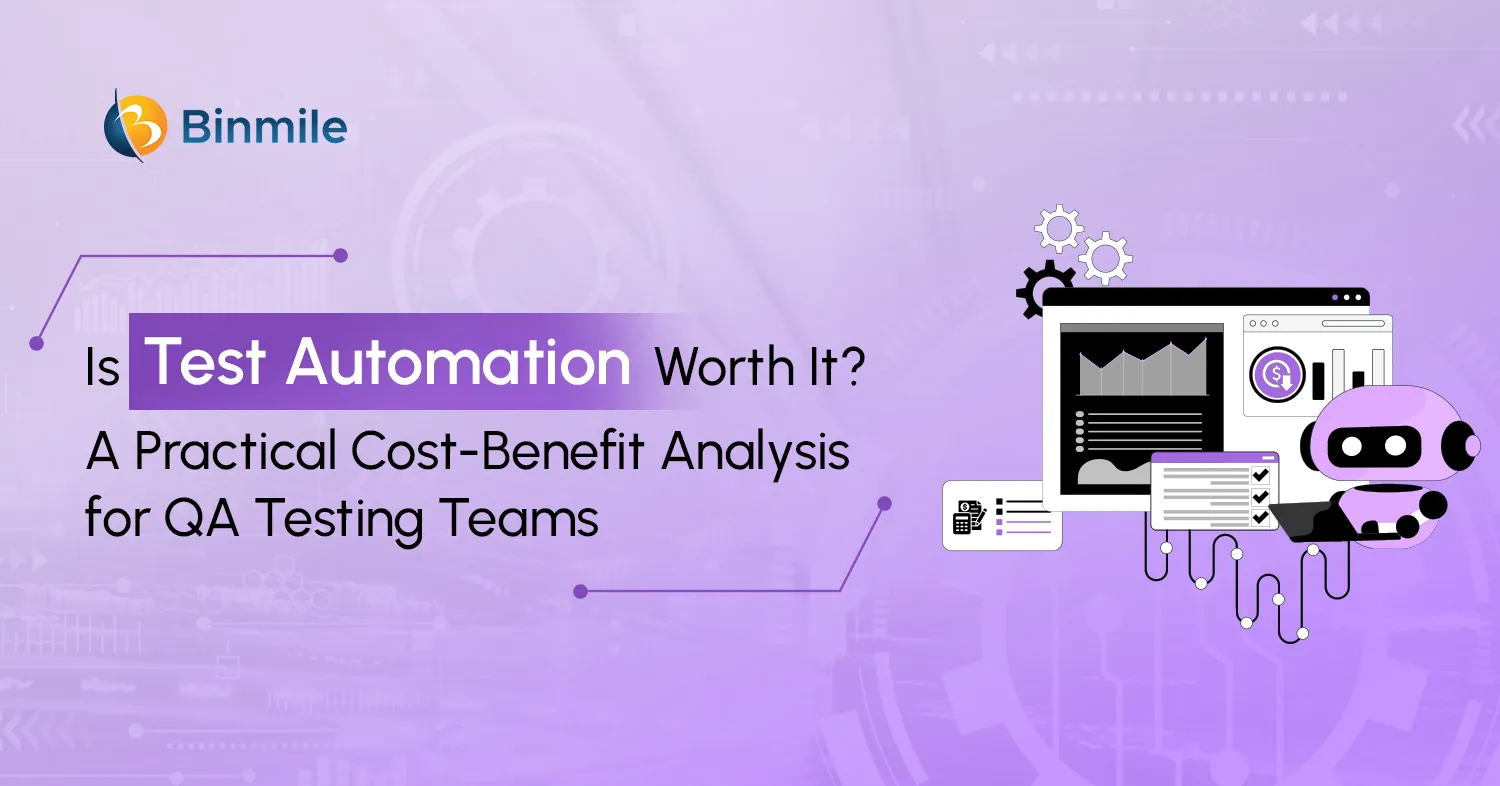Businesses want to embrace all the transformative technologies, including robotic process automation (RPA), to have a competitive advantage and an agile work environment. However, businesses often end up with questions regarding why and where to start, what processes to automate initially, and many more such confusions. This is why businesses need to have a proper understanding of RPA and how to implement it wisely with a strategic plan. An effective RPA implementation can help businesses invest properly in adopting automated solutions that deliver long-term impacts. To do so, businesses must follow the latest strategies to scale RPA solutions in a future-ready and efficient manner.
Businesses incorporating best practices help them streamline their automated workflows, which ultimately reduces development costs and the efforts of team members. The demand for RPA solutions is strategically increasing, and businesses are utilizing automated workflows for efficiently handling core activities. Thus, the global RPA market size is forecasted to hit around USD 211.06 billion by 2034. So, what is a successful RPA implementation? And what strategies do you need to take for scaling RPA with long-term success and growth? This blog will help you explore the correct roadmap and best strategies for implementing RPA effectively. We have also provided the common challenges that businesses face in implementing it, with their solutions.
Understanding the Word “RPA” and Its Implementation
Robotic Process Automation, or RPA is a specific form of Business Process Automation (BPA) that uses software bot applications or bots to automate repetitive manual tasks. RPA mimics human interaction behavior and works with rule-based tasks and user-interface automation strategies. It is backed up and developed with the help of artificial intelligence bots, workflow automation, and screen scraping.
RPA implementation involves the process of end-to-end deployment and management of bots, helping businesses improve their processes in terms of parameters such as speed and accuracy. Implementing RPA systems allows teams to automate their core business activities, which include data entry, document routing, data processing, API integration, appointment scheduling, etc. This results in providing error-free tasks and improving the overall efficiency of core business workflows or processes.
RPA vs Intelligent Automation (IA): Top Features to Know
While RPA works on structured data using predefined rules, combining RPA with business process management (BPM) and more advanced fields gave rise to intelligent automation or IA. This collaboration helps in gaining a powerful capability of handling complex and unstructured data, with little or no human supervision. Both RPA and IA are similar, as they help businesses drive productivity by strategically simplifying processes and automating repetitive core tasks.
Unique Features of RPA:
- Works with structured or semi-structured data using predefined rules and conditions (Rule-based automation processing).
- Completely mimics human behaviors by recording actions like copy, paste, scroll, click, etc.
- End-to-end automation workflow orchestrated by including some tools and systems with RPA.
- Tracking feature helps in auditing bot activities and ensuring that they are complying with regulatory requirements.
Unique Features of IA:
- Manages both structured and unstructured data and can handle complex tasks efficiently.
- Combining RPA with ML (Machine Learning) and NLP (Natural Language Processing) to provide predictive analytics, which transforms data for predicting future trends.
- Enables fraud detection by continuous monitoring of transactions and identifying potential bottlenecks.
- Deploys AI-driven chatbots for instant 24/7 customer support, resolving issues instantly.
Key Benefits for Businesses Implementing RPA
Utilizing RPA, businesses can have upfront benefits and align them with the modern targeted market. Leveraging these benefits results in effective RPA implementation that is irrespective of the company’s size or the industry type. Now, let’s discuss some of the benefits below.

1. Cost-Effective Solution
Bots can work 24/7 and streamline business processes with minimum human supervision. This helps reduce operational expenses as bots replace manual labor and also work accurately while interacting with systems through APIs and GUIs.
2. Provides Consistency
When working with RPA bots, organizations have a safer and more consistent way to handle and automate business activities. This complete consistency and safety come with implementing some features such as robust security measures, auditing robots, strict access controls, and a set of predefined rules.
3. Improves Speed
With 24/7 bots operating business processes and automating them with greater accuracy, businesses get to streamline their complex processes. This leads to increased productivity and improved development speed of core activities.
4. Better Scalability
Automated RPA solutions enable organizations to enhance their core business strategies and have a more flexible strategy to scale up or down to the ever-changing needs. This improved scalability and flexibility help you encounter new challenges with ease.
5. Enhanced Compliance
Implementing RPA solutions provides better compliance, as bots can ensure they are complying with regulatory bodies effectively. These bots work on rule-based access-control process strategies, so there is no chance of non-compliance, leading to a highly controlled environment.
Best Practices to Follow for Successfully Scaling RPA Across the Organization

1: Establishing Governance Framework
For the wide-scale implementation of RPA, businesses should have a centralized framework, or a common governance model known as the Center of Excellence (CoE). A CoE framework is a specific set of best practices that help in driving standardization and fostering a positive environment within the organization. This helps organizations focus on strategic improvements that are required, rather than just adding RPA solutions.
Without this framework or any other governance model, RPA projects can fail and be siloed, unable to scale across departments. This can result in businesses having a poor RPA process and delayed responses to quickly changing business needs. Also, there can be maintenance issues and bottlenecks with bots performing similar tasks across the organization, leading to potential errors and performance issues.
2: Optimizing Current Business Processes
Before starting the automation process, it is important to identify any potential inconsistencies in the particular business process. Businesses should optimize their old processes and ensure that all processes are well documented and have strategies for successfully implementing RPA. By eliminating unnecessary efforts in building robots for poor and inefficient processes, enterprises can improve their business automation strategies without wasting time on problematic processes.
Optimizing processes involves conducting an end-to-end rigorous RPA assessment with the help of bot audits. Regular audits help businesses find variations and duplications that can possibly affect the overall automation process. Proper utilization of these assessments can ensure the quick development of bots that are working on efficient and reliable processes, directly leading to streamlined workflows for implementing RPA.
3: Changing Management Strategy
After automating core activities, businesses enable their teams to utilize a reactive approach. This approach involves a process where the bot reacts to some UI breaks and subsequently throws an error regarding the same on the systems. Then, teams assess the issue and deal with changing the UI elements or functions that are creating the problem. This process is often complicated and reduces the RPA’s effectiveness.
To avoid this situation, businesses need to create a proactive management strategy that directly and quickly changes the impacted area to drive RPA efficiently and effectively. This approach helps in handling the issue before it becomes more critical, which can possibly lead to RPA process destruction and financial losses. Teams can mitigate risks and analyze past performances for better management of RPA bots.
4: Implementing Continuous Monitoring
Organizations face obstacles in implementing continuous monitoring strategies for their newly built RPA bots. This is why using rich analytic metrics like error rate, cycle time, last time run, bot utilization rate, etc., can help monitor the performance of bots and optimize them regularly. These metrics help maintain full visibility, thus leading to a more optimized and interactive automation process.
Additionally, businesses can create bot lifecycle management strategies that ensure complete compliance with regulatory requirements and essential frameworks. This can help businesses in the long run rather than the short term, and also maximize business profits. Teams can analyze the state of the bot, its past activities, and error prediction using real-time dashboards, making the maintenance process easier.
5: Utilizing Process Mining Tools
Process mining refers to the process of identifying and analyzing bot logs. This data-driven strategy helps in improving and tracking processes before automation happens. For scaling RPA across the enterprise, use process mining tools such as Celonis, UiPath’s process mining feature, Apromore, and more. These tools come with various functionalities that help organizations optimize their operations and strategically implement automation to eliminate inefficient work processes.
Leveraging these tools, businesses gain benefits and have a competitive edge in the targeted market. This is because solving the bottlenecks in real time reduces the need for RPA rework, which directly improves the productivity of the core processes. As bots keep on working with efficiency, evolving needs can be prioritized, and businesses gain high insights, leading to greater ROIs.
6: Eliminating the Process Design Document
PDD or Process Design Document is the first document developed in the designing phase of RPA. This document outlines the specifications of business processes that need to be automated. However, these documents are ineffective now, as the documentations are generally made with a massive amount of knowledge. But they still don’t convey the correct requirements to design or plan the RPA work.
Businesses should capture the precise details in developing bots with the help of an enterprise-scale digital format. This digital format must capture all the precision required so that bots don’t need too many constant maintenance phases. Also, using this format, team members should have easy access to the part they want, rather than being unclear and constantly managing the large documentation.
7: Fostering Cross-Functional Collaboration
For effective scaling of RPA, businesses should foster an agile environment wherein teams support collaboration between various departments within the organization. Departments such as IT, operations, HR, and finance, all together, should ensure successful RPA implementation, which aligns with the organization’s goals. By fostering cross-functional collaboration between these departments, businesses can conduct knowledge-sharing events that help enhance transparency and lead to building a more collaborative RPA solution.
Businesses should also implement compulsory cross-training, which helps motivate employees and allows them to learn new skills and upskill every day. This training can lead to greater flexibility between team members and make them resolve any bot errors with more efficient solutions. Eventually, maintaining a collaborative and unified automation strategy helps businesses in the long term, with many benefits for continued automation.
8: Utilizing Scalable BPM Tools
BPM or Business Process Management tools are essential when it comes to scaling RPA solutions in an effective way. These BPM tools provide a structural approach for improving business processes that enhances customer satisfaction and reduces development costs significantly. When the number of bots increases, these tools or platforms enable teams to enhance visibility levels and optimize end-to-end bot processes.
Integration of RPA with BPM tools, businesses can yield a more scalable and flexible RPA solution that is future-ready and supports growth with evolving needs as well. In automated workflows, these BPM tools ensure consistency and maintain compliance with all governance bodies, helping businesses scale up without any disruptions.
9: Integrating with all Dependencies
RPA bot development should initially start with connecting all the dependencies or any information that could drive the development phase and result in a high-quality bot. For this to happen, businesses need to thoroughly review their business objectives and comply with all the necessary regulations, legacy systems, etc. They should also ensure that there is seamless integration happening with all the internal resources, as this will impact the development phase.
For an operation to be smoothly deployed, businesses should also ensure that the communication is completely transparent between the business stakeholders and teams performing automation. This will help eliminate any unrealistic expectations and lead to efficient development.
Need help with an effective RPA setup that supports business growth? Connect with our experts to transform your business processes with scalable RPA solutions.

Common Challenges While Scaling and Implementing RPA
As we have discussed earlier, one of the benefits of RPA is that its solutions provide 100% ensured scalability. However, scaling these RPA solutions comes with some challenges that organizations face:
1. Siloed Automation
Businesses often start by adopting RPA automation strategies in siloed departments such as finance, HR, operations, marketing, etc. This decentralized RPA implementation later results in problems when connecting different automation systems for scaling RPA solutions. Also, it reduces visibility, and stakeholders have problems creating and collaborating on various automation processes.
Solution: To avoid siloed automation implementations, businesses should have a centralized RPA governance framework before implementing the RPA process. The centralized framework will ensure that processes are straightforward and implemented across various departments. This helps in reducing duplication of bots and efforts in building similar bots for different departments.
2. Employees’ Resistance to Change
Businesses have a major problem in initiating RPA solutions, as their employees resist and hesitate. Employees have a fear that RPA can ultimately have a negative impact, and they can lose their jobs. With this mindset and misconception, businesses can have a stronger pushback against these automation initiatives.
Solution: Educating and offering them enough training programs, upskilling opportunities, etc., helps employees clear their misconceptions that RPA reduces the manual burden and does not completely replace them. Businesses that build trust with their employees and communicate the specific goals that they wish to accomplish can have a successful RPA solution.
3. Technical Demands
RPA implementation involves the need for a powerful underlying architecture and a team with sufficient knowledge about how RPA works and supports it. Without these technical demands, businesses have a downside, as they can’t scale RPA across the enterprise without proper planning and execution. Also, the team should be skilled enough to support the particular skill set needed to perform automation processes.
Solution: For proper investing and executing RPA solutions, businesses need to collaborate with experienced experts who provide test automation services for smooth RPA scaling. Leveraging these external service providers helps in creating a scalable RPA infrastructure with newly emerged cloudless architectures and AI monitoring tools.
Closing Remarks on Successful RPA Implementation
With the right RPA implementation, businesses can automate their core tasks with scalability and help them avoid any rework or bot duplication that will increase the expenses later on. However, embracing the strategies that we have discussed earlier involves knowing your business goals and which strategy would benefit the most. Understanding the business requirements and aligning them with one of the most suitable approaches will lead to a sustainable robotic process automation strategy.
In this blog, we have discussed the top 9 strategies for successful RPA scaling within your organization, its benefits, and challenges with optimal solutions. For simplifying core processes, partnering with a software testing company can help your organization by providing a correct roadmap and solution for your automation processes.









